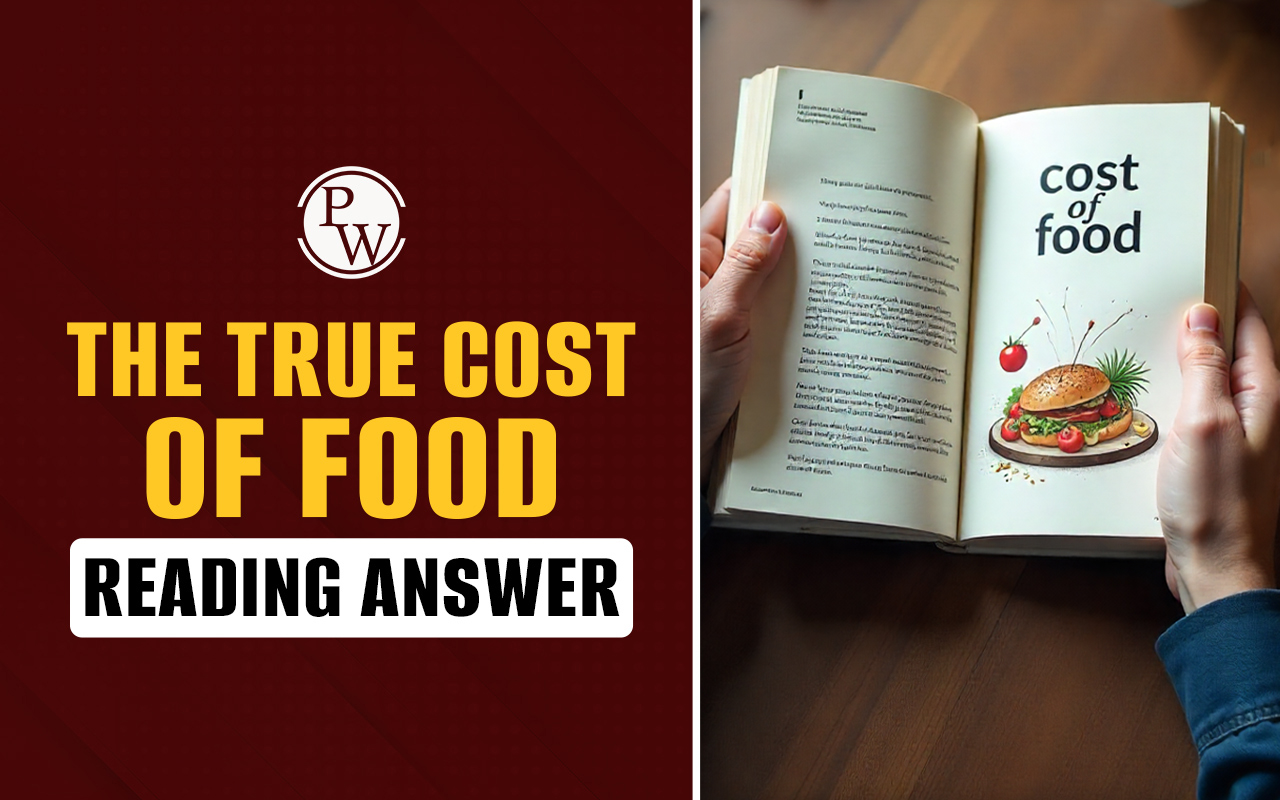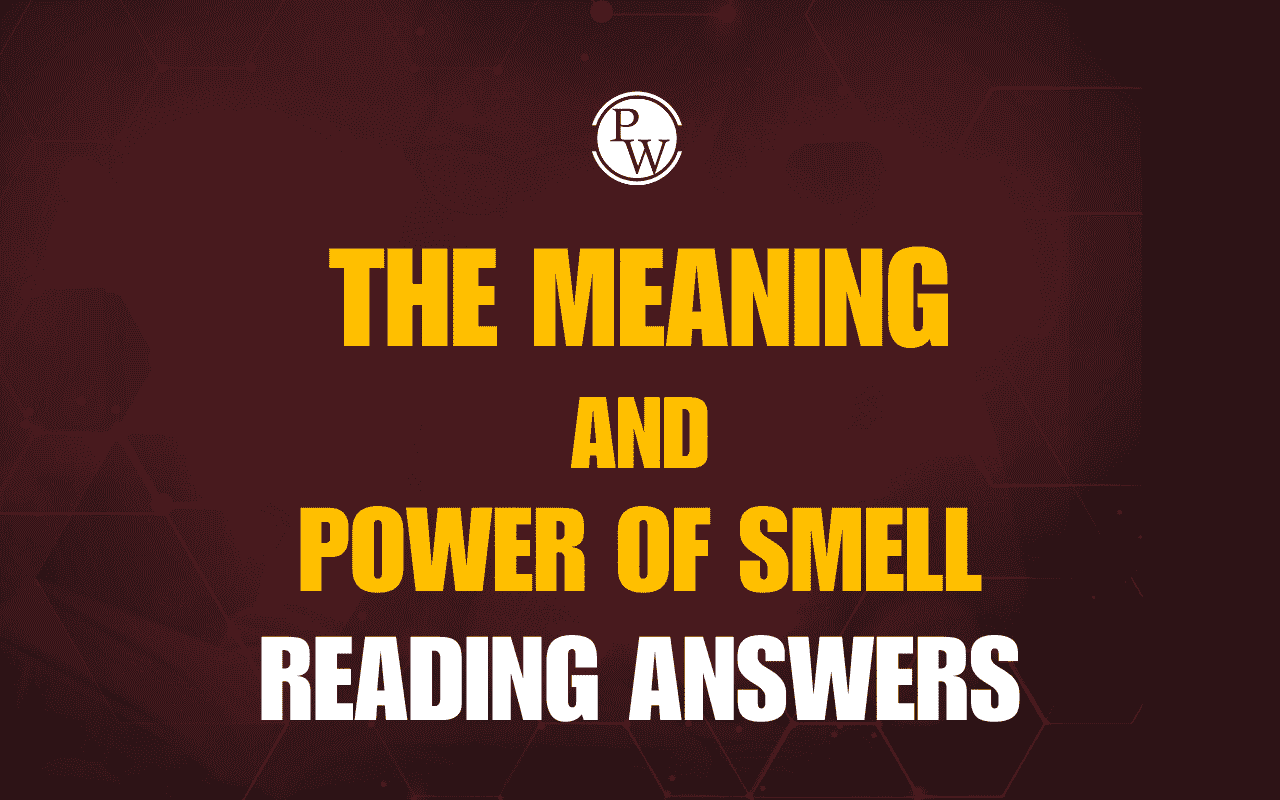
Tricky Sums and Psychology Reading Answers: For many IELTS aspirants, the reading test can be challenging. As this test includes passages with complex language from different topics, it is crucial to practice with various types of practice passages.
The IELTS reading passage on tricky sums and psychology is a good resource to improve IELTS reading test preparation. Although this passage seems simple with mathematics and memory as the main idea, in reality, it explores various aspects of human psychology, pressure, and performance.
This passage is not only useful for improving students’ IELTS band score, but it's also crucial to gain real-world insight into how people struggle with basic tasks under stress. Understanding the tricky sums and psychology, IELTS reading explanation helps candidates recognise both linguistic patterns and deeper psychological themes.
IELTS Online Coaching 2025, Free Courses for Study
Tricky Sums and Psychology Reading Answers IELTS Passage
Here is the tricky sums and psychology IELTS reading. Candidates should carefully read the passage before solving the questions.
Reading Passage: Tricky Sums and Psychology
A In their first years of studying mathematics at school, children all over the world usually have to learn the times table, also known as the multiplication table, which shows what you get when you multiply numbers together. Children have traditionally learned their times table by going from '1 times 1 is 1' all the way up to '12 times 12 is 144'.
B Times tables have been around for a very long time now. The oldest known tables using base 10 numbers, the base that is now used everywhere in the world, are written on bamboo strips dating from 305 BC, found in China. However, in many European cultures the times table is named after the Ancient Greek mathematician and philosopher Pythagoras (570-495 BC). And so it is called the Table of Pythagoras in many languages, including French and Italian.
C In 1820, in his book The Philosophy of Arithmetic, the mathematician John Leslie recommended that young pupils memorize the times table up to 25 x 25. Nowadays, however, educators generally believe it is important for children to memorise the table up to 9x 8,10 x 10 or 12 X12.
D The current aim in the UK is for school pupils to know all their times tables up to 12 x 12 by the age of nine. However, many people do not know them, even as adults. Recently, some politicians have been asked arithmetical questions of this kind. For example, in 1998, the schools minister Stephen Byers was asked the answer to 7 x 8. He got the answer wrong, saying 54 rather than 56, and everyone laughed at him.
E In 2014, a young boy asked the UK Chancellor George Osborne the exact same question. As he had passed A-level maths and was in charge of the UK's economic policies at the time, you would expect him to know the answer. However, he simply said, 'I've made it a rule in life not to answer such questions.'
F Why would a politician refuse to answer such a question? It is certainly true that some sums are much harder than others. Research has shown that learning and remembering sums involving 6,7,8 and 9 tends to be harder than remembering sums involving other numbers. And it is even harder when 6,7,8 and 9 are multiplied by each other. Studies often find that the hardest sum is 6×8, with 7×8 not far behind. However, even though 7×8 is a relatively difficult sum, it is unlikely that George Osborne did not know the answer. So there must be some other reason why he refused to answer the question.
G The answer is that Osborne was being 'put on the spot' and he didn't like it. It is well known that when there is a lot of pressure to do something right, people often have difficulty doing something that they normally find easy. When you put someone on the spot and ask such a question, it causes stress. The person's heart beats faster and their adrenalin levels go up. As a result, people will often make mistakes that they would not normally make. This is called 'choking'. Choking often happens in sport, such as when a footballer takes a crucial penalty. In the same way, the boy's question put Osborne under great pressure. He knew it would be a disaster for him if he got the answer to such a simple question wrong and feared that he might choke. And that is why he refused to answer the question.
- IELTS exam eligibility requirements
- Documents Required for IELTS Registration
- IELTS Test Slot Booking
Tricky Sums and Psychology Reading Answers IELTS Questions
Here are the IELTS reading questions based on the tricky sums and psychology passage. Candidates are recommended to understand the question type to accurately answer it.
Questions 1-6: Choose the correct letter A, B, C, or D.
1. According to the passage, children traditionally learn times tables by:
A) Starting with the most difficult calculations
B) Learning from 1x1 up to 12x12
C) Focusing only on base 10 numbers
D) Using modern teaching methods
2. The oldest known multiplication tables using base 10 numbers were found:
A) In Ancient Greece during Pythagoras's time
B) In European cultures in 570 BC
C) On bamboo strips in China from 305 BC
D) In John Leslie's book from 1820
3. John Leslie's recommendation in 1820 was that pupils should memorize:
A) Times tables up to 9x9
B) Times tables up to 12x12
C) Times tables up to 25x25
D) Only the most essential multiplication facts
4. Stephen Byers's mistake with 7x8 resulted in:
A) His resignation from office
B) Public embarrassment and laughter
C) A change in educational policy
D) Increased focus on times table learning
5. George Osborne refused to answer the multiplication question because:
A) He genuinely didn't know the answer
B) He had failed A-level mathematics
C) He didn't want to risk making a mistake under pressure
D) The question was inappropriate for his position
6. According to the passage, research shows that the most difficult multiplication sum is:
A) 7x8
B) 8x9
C) 6x8
D) 9x9
Questions 7-11: Complete the sentences below using NO MORE THAN THREE WORDS from the passage.
7. The multiplication table is also known as the __________.
8. In many European cultures, the times table is called the __________.
9. The current UK aim is for pupils to know times tables by __________.
10. When people are under pressure, their __________ levels increase.
11. The psychological phenomenon of making mistakes under pressure is called __________.
Questions 12-16: Do the following statements agree with the information in the passage? Write:
-
TRUE if the statement agrees with the information
-
FALSE if the statement contradicts the information
-
NOT GIVEN if there is no information on this
12. Base 10 numbers are used universally around the world today.
13. Pythagoras personally created the multiplication table system.
14. Most UK adults can successfully recite their times tables up to 12x12.
15. Sums involving the numbers 6, 7, 8, and 9 are more difficult to remember.
16. George Osborne had previously failed mathematics examinations at school.
Questions 17-20: Match each paragraph (D-G) with its main idea. Choose from the list below.
17. Paragraph D 18. Paragraph E
19. Paragraph F 20. Paragraph G
Main Ideas:
A) Modern educational expectations and adult performance
B) A politician's refusal to answer a mathematical question
C) Research findings about difficult multiplication problems
D) The psychological explanation for avoiding mathematical questions under pressure
What are the IELTS Reading Answers for Tricky Sums and Psychology?
Here are the IELTS reading answers for the tricky sums and psychology passage provided above. Once candidates complete answering the IELTS based questions, they should refer to the below provided answers for self-evaluation. This process is crucial to identify one’s weaknesses and dedicate time to strengthening them.
Answers 1-6 (Multiple Choice)
-
B (Paragraph A states that children learn from '1 times 1 is 1' all the way up to '12 times 12 is 144'.)
-
C (Paragraph B includes bamboo strips dating from 305 BC, found in China.)
-
C (Paragraph C states John Leslie recommended that young pupils memorize the times table up to 25 x 25.)
-
B (Paragraph D states, He got the answer wrong...and everyone laughed at him.)
-
C (Paragraph G explains Osborne feared he might choke under pressure.)
-
C (Paragraph F states Studies often find that the hardest sum is 6×8.)
Answers 7-11 (Sentence Completion)
-
times table (Paragraph A: also known as the multiplication table)
-
Table of Pythagoras (Paragraph B)
-
age of nine (Paragraph D)
-
adrenalin (Paragraph G: their adrenalin levels go up)
-
choking (Paragraph G: This is called choking)
Answers 12-16 (True/False/Not Given):
-
True (Paragraph B states base 10 is now used everywhere in the world.)
-
Not Given (The passage says the table is named after Pythagoras but doesn't say he created it.)
-
False (Paragraph D states many people do not know them, even as adults.)
-
True (Paragraph F explains these numbers tends to be harder than remembering sums involving other numbers.)
-
Not Given (The passage mentions he passed A-level maths but doesn't mention any failures.)
Answers 17-20 (Paragraph Matching):
-
A (Paragraph D discusses modern UK educational aims and adult performance.)
-
B (Paragraph E describes George Osborne's refusal to answer the question.)
-
C (Paragraph F presents research about which sums are most difficult.)
-
D (Paragraph G explains the psychological reasons behind avoiding questions under pressure.)
How to Solve IELTS Reading Passage on Tricky Sums and Psychology?
The IELTS reading passage on Tricky sums and psychology is crucial to strengthen one’s preparation for the IELTS exam. However, to improve accuracy, candidates must follow a strategic approach when reading and answering the passage-based questions.
Here are the tips on how to approach the IELTS reading on Tricky sums and psychology:
-
Skim the passage to understand the general structure.
-
Identify the main idea of each paragraph and the passage as a whole.
-
Highlight various research terms and other factual data, as many questions are based on these details.
-
Underline causes and effects relations presented in the passage. This passage is full of psychological triggers linked to performance, which are crucial for answering related questions.
-
Use logic, especially for tricky questions that are specifically designed to test candidates’ analysis and understanding.
Guidance of PW IELTS
Physics Wallah offers a few popular online IELTS courses for all students. Follow the latest IELTS articles to better prepare for the exam.
| IELTS Registration | IELTS Eligibility Criteria |
| IELTS Exam Pattern | IELTS Syllabus |
| IELTS Exam Dates | IDP IELTS Test Centers |
Tricky Sums and Psychology Reading Answers FAQs
What is the IELTS reading passage on tricky sums and psychology about?
How can Tricky sums and the psychology IELTS reading passage improve preparation?
What are the IELTS reading question types for Tricky sums and psychology?
How to solve IELTS reading passage on tricky sums and psychology effectively?














